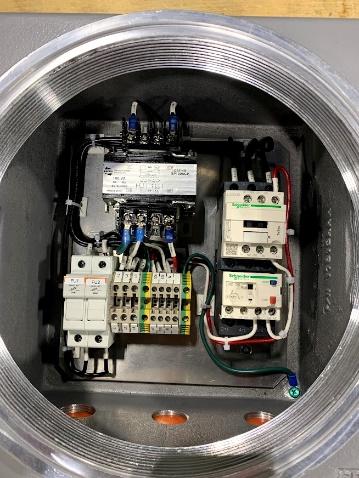Electric motor starters and controllers play a crucial role in many electrical control systems. To assist you in grasping the essentials of motor starters better, we’ve put together this piece.
What is Electric Motor Starter?
To properly start and stop a motor, an electrical component is needed, i.e. starting motor. An electric motor starter acts as a relay, switching the electricity on and off. A starter, unlike a relay, offers overcurrent and low voltage safety. There are four primary purposes of a motor starter:
- Start a vehicle with caution
- Make a safe stop for a car
- Reverse a motor’s rotation
- Ensure that the motor is protected against overheating and overvoltage
Why Select Motor Starter

Inductive loads, such as electric motors, need extra power to start and relatively low power to keep running at high speed. Inrush current refers to the first burst of electricity. Despite its modest length, it has the potential to exceed the steady-state current. It’s safe to start and stop motors with this amount of inrush current.
The frequent inrush from starting across-the-line might overload and harm the motor in applications that need many starts/stops (usually more than four per hour).
Also Read: 6 Considerations for Choosing the Best-Fit Starter Motor Control Technology
It can harm other equipment on the supply line if a considerable quantity of current is drawn from a bigger engine. As a result, a distinct technique is used to start most big motors. On-delay timers or programming of the control system should be used to stagger the commencement of many smaller loads coming on the line simultaneously.
How it Works
A motor can be started manually or electrically. When using a manual starter, an ON/OFF lever or button must be manually shifted from the ON to the OFF position for the device to start. The power supply may be turned on or off by forming or breaking the connection.
Manual starts have the drawback of automatically resuming operation after a power outage, which might pose a safety risk. However, manual openings do not allow for automated control. Hence industry best practices discourage the usage of manual starters.
The contactor functions similar to a relay in an electro-mechanical starter. An energized coil magnetically pulls in the contacts that complete the circuit to the motor, enabling it to draw electricity. A lower voltage (usually 120V) is used to operate the power circuit, while a higher voltage (commonly 208V or460V) is used to power the system.
Also Read: How Soft starters Regulate Current in Induction Motors
